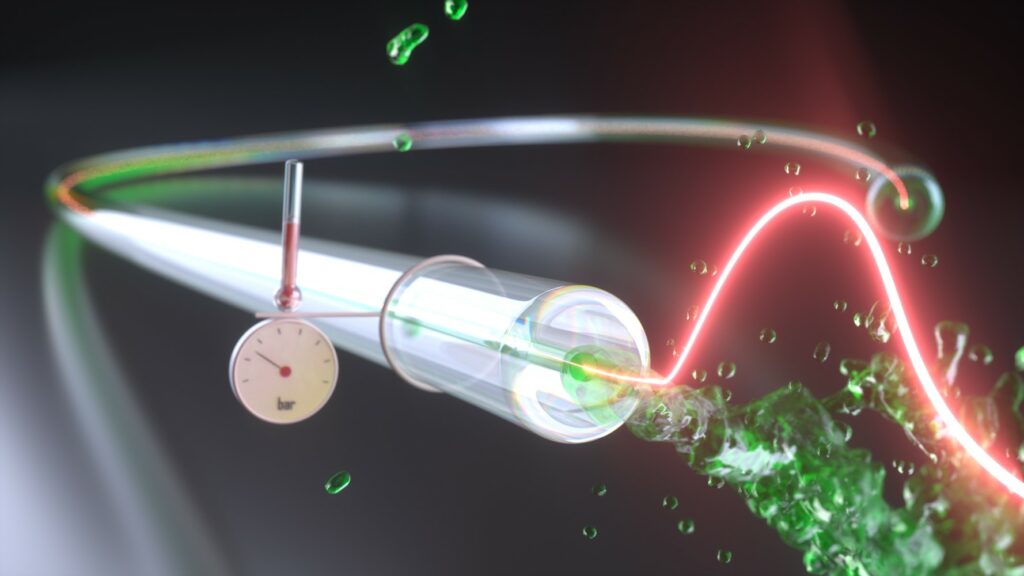That makes sens*ing: Sound waves in liquid-filled fibers unravel negative pressure
When characterizing hazardous materials such as toxic liquids, the less material you need for investigation, the better. This especially applies for harsh and extreme measurement conditions like high pressure or increased temperature. As described in their recent publication “Extreme thermodynamics in nanolitre volumes through stimulated Brillouin-Mandelstam scattering”, Alexandra Popp and Andreas Geilen developed a measuring system that perfectly addresses these demands. They use a nonlinear optical effect that couples light and sound waves to measure only a few nanoliters of a liquid to gain insight into the thermodynamic properties. This is incredibly little, as you need about fifty thousand nanoliters to form one single drop of water.
The platform used in the new setup is an optical fiber. Usually, optical fibers are thin long strands of glass or glassy materials mainly used in communications, e.g. as high-speed data transfer lines forming the backbone of the world wide web. In the newly developed system, the fiber has a hollow core that is filled with the liquid of interest. When tightly sealed, it easily withstands high temperatures and inner pressures and is able to maintain the exotic state of absolute negative pressure.
To evaluate the liquid‘s properties, Alexandra and Andreas coupled laser light into the fiber and excited traveling sound waves. The latter are very sensitive to changes in temperature and pressure. The light and sound waves interact via so-called Brillouin-Mandelstam scattering. In easy terms, the color of the light slightly changes depending on the sound wave. As this color shift is impacted by local temperature and global pressure, it is possible to determine those values by detecting the scattered light. This enables the characterization of tiny amounts of liquids in a save and contact-free way.
Alexandra and Andreas worked on this project in the group of Birgit Stiller at the Max Planck Institute for the Science of Light (MPL). Alexandra has finished her PhD thesis, working in two research groups: the Stiller Research Group at MPL and the Christoph Marquardt Research Group at FAU. The original publication can be found in Nature Physics.

